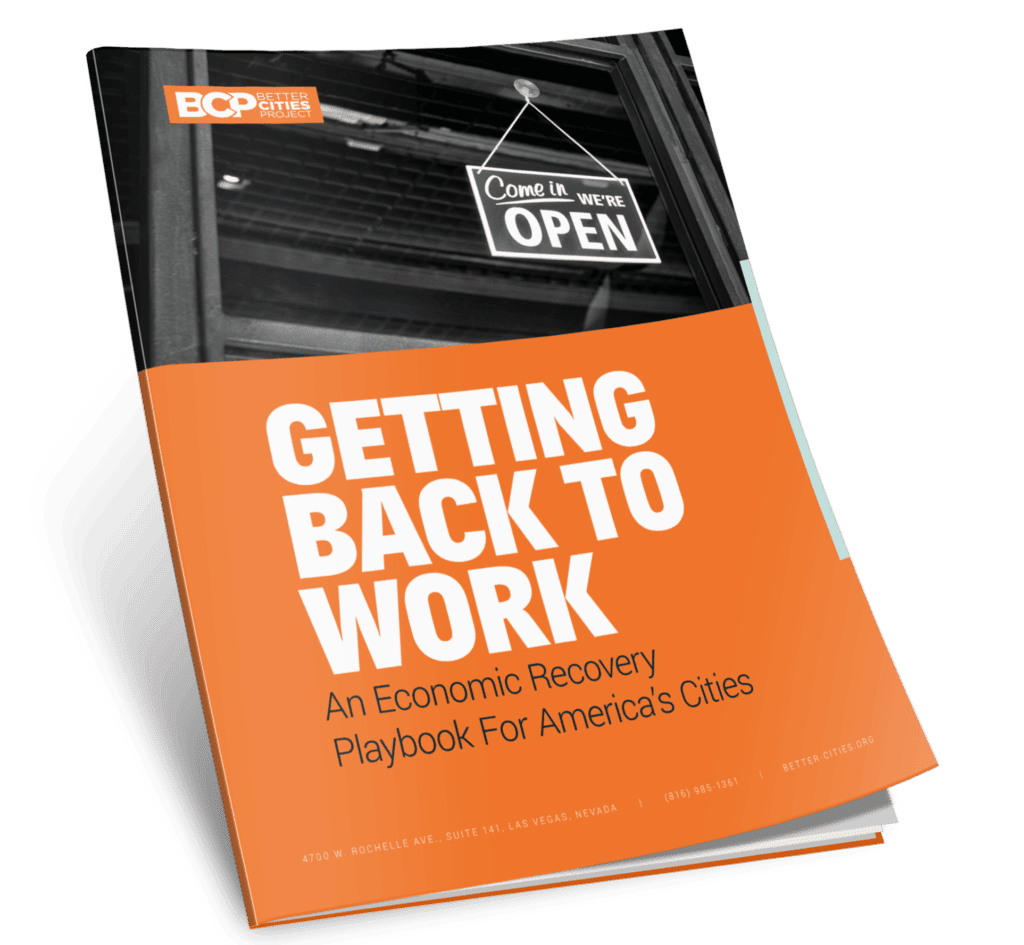|
Tired of reading? Listen to a recording of this article or download it for later.
|
By John Mozena
During the Great Recession, cities across the United States dramatically expanded their use of targeted economic development incentives in an attempt to curb job losses and jump-start economic recoveries. In retrospect, the evidence is clear: Most programs were broadly ineffective at creating jobs or growing economies. However, the costs they incurred frequently still burden municipal budgets today, hindering fiscal resiliency when it’s most needed.
In the aftermath of COVID-19, cities will be tempted to make the same sort of economic development deals. It is critical for local government officials to recognize that the standard economic development model of subsidies, tax abatements and other incentives is ineffective at best and harmful at worst to job creation and economic growth. Despite the claims of sophisticated consultants who travel the country advertising their ability to maximize incentive packages for corporate clients, economic development subsidies simply do not get the job done.
Academic research and real-world experience demonstrate that economic development incentives:
- Do not create any more jobs or economic growth than would have happened otherwise.
- Impose costs on cities in the form of reduced revenues and increased liabilities.
- Make local economies less free, less fair, less inclusive, less resilient, less entrepreneurial, less innovative and more biased in favor of large incumbent businesses.
Political pressure for state and local officials to “do something” to spur business activity will be significant and supported by the businesses and consultants that stand to profit. But policymakers should ensure constituents understand that these programs come at a cost to taxpayers, to the business community as a whole and to public services such as police, fire, public health, roads, schools and more.
History shows those costs are often unacceptable.
Constituents understand this trade-off if it is explained to them. In their investigations into the interactions of politics and economic development, Nathan Jensen at the University of Texas at Austin and Edmund Malesky at Duke University found that while nonpartisan voters broadly support economic development “job creation” when presented to them without context, that support disappears when voters learn these incentives take resources that otherwise would be available for other government programs or available for return to taxpayers. Anyone concerned about backlash from constituents can and should focus on educating the public about the costs these programs impose on a community.
By avoiding the targeted-incentive trap, cities can instead focus on how existing resources and regulatory structures encourage or discourage business activity of all shapes and sizes – and adapt them to the post-pandemic world. Readers should examine the other chapters in this playbook for ideas on how they can spur real economic growth without impoverishing public coffers.

3 Bad Ideas
Professional sports stadiums are arguably the worst thing cities regularly subsidize — they sit empty and unused far more often than not, and offer largely part-time seasonal jobs. Even a high-attendance baseball stadium’s 3 million fans per year across 81 games is only equivalent to the annual customer count of a single big-box store. All told, pro sports teams generate a fraction of a percent of the average city’s economic activity, despite how loudly the fans may cheer.
Data centers have massive up-front capital and energy costs for operators. Their payrolls, however, are tiny. Once built, they require very few employees to manage what are essentially warehouses for computers operated remotely by programmers in other states or countries. That’s how some data center deals have ended up with price tags of more than $1 million per subsidized job. Unless you’re selling them electricity, data centers have minimal economic impact.
Distribution centers for online retailers or logistics companies are located where the customers are, where the roads are and where there’s available property. Tax incentives won’t get a retailer or logistics company to put a distribution center someplace where its customers aren’t or where the property or road infrastructure will interfere with its daily operations.
The Evidence Against Incentives
Economic development incentives are one of the few topics that unite experts from left, right and center against them. They are programs with such broad opposition that an economist from the free-market Mercatus Center can write in a conservative publication like National Review that “Alexandria Ocasio-Cortez Is Right about Amazon’s Corporate Welfare;” or where traditional opponents such as Americans for Prosperity and public-sector unions can find common cause in working to scale them back at the state level.
In fact, virtually the only research that supports the common model of economic development incentives are studies paid for by subsidy recipients or other beneficiaries of the massive economic development industry.
Driven in part by new Government Accounting Standards Board (GASB, pronounced “gazz-bee”) accounting rules that made tax abatements public record, high-profile experts have become increasingly vocal in their conclusion that incentives incur huge costs while delivering few — if any — benefits. And they have the real-world numbers to prove it.

SPOTLIGHT
The TIF Equation
One local tax mechanism that does often impact site selection is tax increment financing (TIF), but the usual result of TIF is not meaningful job creation or economic growth.
Rather, TIF districts generally tend to drain existing or potential economic activity from elsewhere in a community and concentrate it in the district. While this may create the impression of success, the actual result is all too often a reshuffling rather than a revitalization of a local economy.
TIF districts do well at the expense of nearby neighborhoods, and frequently by draining resources from schools and other valuable public services.
It’s also critical to recognize that the “pays for itself” TIF model is dependent on steadily upward growth. In a flat economy or recession, the TIF equation can turn against a community, especially if bond debt or other obligations were incurred. In the current downturn, many municipalities are being forced to cover TIF district liabilities right when their general funds can least bear the strain.
Richard Florida, one of the best-known urban policy experts in North America, bluntly calls targeted business incentives “useless,” pointing out that there is no connection between how much a city or state spends on them and any meaningful measurement of economic well-being. Using data from a New York Times investigation, he wrote in 2012, “We found no statistically significant association between economic development incentives per capita and average wages or incomes; none between incentives and college grads or knowledge workers; and none between incentives and the state unemployment rate.”
Researchers at the University of Connecticut and University of North Carolina-Chapel Hill put it even more simply: “This simple but direct finding — that incentives do not create jobs — should prove critical to policymakers.”
One reason for this certainty: Enough time has passed for many deals from the Great Recession era to be ripe for analysis. The results are overwhelmingly negative, such as from researchers at the University of Illinois at Chicago who looked at Rust Belt states’ incentive programs and found no “compelling evidence that economic development subsidies created or retained jobs to help municipalities recover from the Great Recession.”
Why? Because state and local economic development incentives rarely change what businesses were already going to do. Timothy Bartik at the Upjohn Institute for Employment Research surveyed the available research and came to the conclusion that in seven out of every eight state and local incentive deals, recipient businesses would have done the exact same thing without the incentive, based on all the other business and economic factors already in play. Since even the incentives that do change a site selection decision sometimes end up costing more than they were worth, it’s realistic to estimate that more than 90% of the incentive deals made around the nation incur more in costs than they deliver in benefits to the community.
Businesses make decisions about what to build and where, how many employees to hire and other such choices based on a complex web of factors. While the details of each decision are unique, some common threads appear in surveys of business decisionmakers, site selection consultants and others involved in these sorts of decisions. They include availability to attract skilled labor; ease and speed of construction and occupancy; the regulatory environment; and small business and entrepreneurship. The remaining chapters in this playbook address how municipal leaders can improve those things in their cities — for everyone, not just the bigger companies whose development attorneys have them on speed dial.


